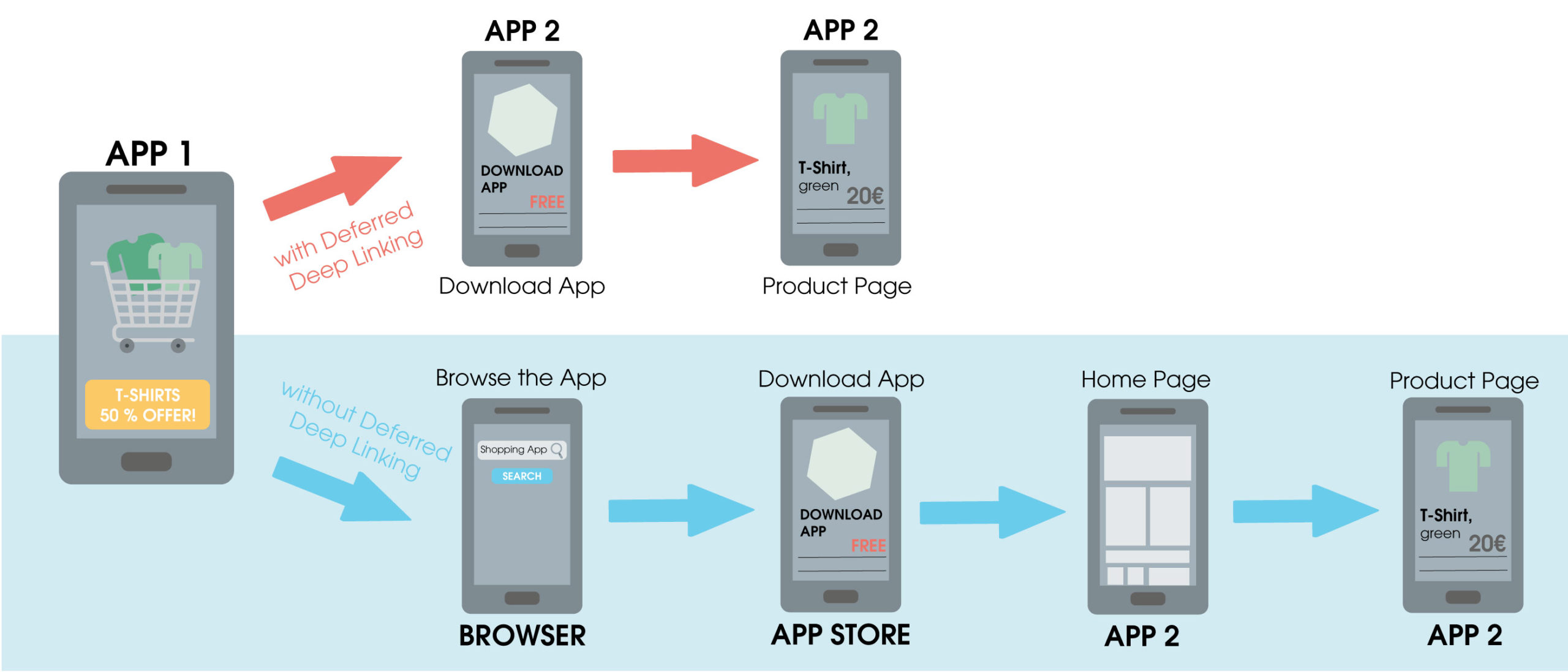Deep Hot Link: What You Need To Know And How It Works
Deep hot linking might sound like some kind of secret internet handshake, but trust me, it’s more powerful than you think. If you’ve ever wondered how websites can seamlessly share content or images without permission, you’re about to dive into the world of deep hot linking. In simple terms, it’s a way to directly link to specific files or resources on another website, often bypassing the homepage or main content. This practice is both a blessing and a curse in the digital world, and today, we’re going to break it all down for you.
Now, before we get into the nitty-gritty, let’s talk about why deep hot linking is important. Whether you’re a website owner, a content creator, or just someone curious about how the internet works, understanding this concept can save you from potential headaches. Imagine someone taking your images or files and using them on their own site without giving you credit or even paying for the bandwidth. Sounds unfair, right? That’s where deep hot linking comes into play.
This article isn’t just about definitions; it’s about equipping you with the knowledge to protect your digital assets and respect others’ work. So, grab a cup of coffee, sit back, and let’s explore the ins and outs of deep hot linking. By the end of this, you’ll know exactly how it works, its pros and cons, and how to handle it like a pro.
- 5movierulz 2025 Your Ultimate Guide To Streaming Movies Like A Pro
- Andie Elle Naked The Truth Behind The Headlines
Here’s a quick overview of what we’ll cover:
- What is Deep Hot Linking?
- How Does Deep Hot Linking Work?
- Is Deep Hot Linking Legal?
- Advantages and Disadvantages of Deep Hot Linking
- Protecting Your Website from Deep Hot Linking
- Using Deep Hot Linking Ethically
- Common Mistakes to Avoid
- Best Practices for Handling Deep Hot Links
- Tools to Detect Deep Hot Links
- Final Thoughts and Next Steps
What is Deep Hot Linking?
Deep hot linking, also known as inline linking or direct linking, is a technique where someone links directly to a file or resource on another website rather than linking to the homepage or main content. Think of it like someone cutting straight to the chase instead of following the proper path. For example, instead of linking to the main page of an article, they might link directly to an image or PDF hosted on your server.
This practice can have serious implications for website performance and resource usage. When someone deep hot links to your content, they’re essentially using your server resources without your permission. In some cases, this can lead to increased bandwidth costs and slower load times for your site. But hey, not all deep hot linking is bad. Sometimes, it’s used for legitimate purposes, like sharing content with proper attribution.
- Movierulz 3 The Ultimate Guide To Your Favorite Streaming Hub
- Hdhub4u Bollywood Movies Your Ultimate Destination For Blockbuster Entertainment
Why Should You Care About Deep Hot Linking?
Here’s the deal: if you’re running a website, deep hot linking can affect your bottom line. Every time someone links directly to your resources, your server has to work harder to deliver that content. If it’s happening on a large scale, it can slow down your site and impact user experience. Plus, there’s the ethical issue of someone using your content without giving you credit. Not cool, right?
How Does Deep Hot Linking Work?
Let’s break it down step by step. When someone deep hot links to your content, they’re essentially embedding a direct link to a file on your server. This could be an image, a video, or any other type of file. The user on the other site sees the content as if it’s hosted on that site, but in reality, it’s being pulled from your server.
Here’s a quick example: imagine you have an image hosted on your site at the URL https://yourwebsite.com/images/photo.jpg. Someone else could embed that image on their site using the same URL, and every time someone views their page, your server delivers the image. It’s like they’re borrowing your content without asking.
The Technical Side of Deep Hot Linking
On the technical side, deep hot linking works by embedding the direct URL of the resource in the HTML code of the linking site. For images, this might look something like this:

When a user visits the linking site, their browser sends a request to your server for the image. Your server processes the request and sends the file back, all without the user ever knowing they’re accessing content from your site.
Is Deep Hot Linking Legal?
Now, here’s the big question: is deep hot linking legal? The answer isn’t as straightforward as you might think. In many cases, deep hot linking is considered a gray area in terms of legality. While it’s not necessarily illegal, it can violate terms of service agreements or copyright laws, depending on the situation.
For example, if you’re deep hot linking to someone else’s content without permission, you could be infringing on their intellectual property rights. On the other hand, if the content is publicly available and the owner has given permission for it to be shared, deep hot linking might be perfectly fine.
Legal Considerations for Deep Hot Linking
Here are a few things to keep in mind when it comes to the legality of deep hot linking:
- Check the terms of service of the site you’re linking to.
- Ensure you have permission to use the content.
- Be aware of copyright laws in your country.
- Consider the ethical implications of using someone else’s resources.
Advantages and Disadvantages of Deep Hot Linking
Like most things in life, deep hot linking has its pros and cons. Let’s take a look at both sides of the coin.
Advantages of Deep Hot Linking
- Convenience: Deep hot linking can make it easy to share content quickly and efficiently.
- Reduced Storage Costs: By linking to someone else’s resources, you don’t have to store the files on your own server.
- Improved User Experience: Users can access high-quality content without waiting for large files to download.
Disadvantages of Deep Hot Linking
- Bandwidth Theft: If someone deep hot links to your content, they’re using your server resources without permission.
- Copyright Issues: Deep hot linking can lead to legal problems if you’re using someone else’s content without permission.
- Security Risks: Embedding external content can open up vulnerabilities on your site.
Protecting Your Website from Deep Hot Linking
If you’re worried about others deep hot linking to your content, there are steps you can take to protect your site. One of the most effective methods is to use hotlink protection, which blocks unauthorized access to your resources. Many web hosting platforms offer this feature as part of their security tools.
Here’s how you can set up hotlink protection:
- Log in to your web hosting control panel.
- Look for the "Hotlink Protection" or "Security" section.
- Add the domains you want to allow access to your resources.
- Save the changes and test the protection.
Additional Tips for Preventing Deep Hot Linking
Besides hotlink protection, here are a few other tips to keep your content safe:
- Use watermarks on your images to discourage unauthorized use.
- Host sensitive files on a private server or cloud storage.
- Monitor your site’s bandwidth usage to detect unusual activity.
Using Deep Hot Linking Ethically
If you’re planning to use deep hot linking, it’s important to do so ethically. Always get permission from the content owner before linking to their resources. If permission isn’t possible, consider using alternative methods, like embedding content with proper attribution or hosting the files on your own server.
Here’s a checklist for ethical deep hot linking:
- Ask for permission from the content owner.
- Provide proper attribution and credit.
- Ensure the content is publicly available and not protected by copyright.
Common Mistakes to Avoid
Even the best of us make mistakes, but when it comes to deep hot linking, some errors can have serious consequences. Here are a few common mistakes to avoid:
- Assuming all content is free to use without permission.
- Ignoring terms of service agreements.
- Failing to monitor your site for unauthorized links.
Best Practices for Handling Deep Hot Links
Whether you’re dealing with incoming or outgoing deep hot links, following best practices can help you manage the situation effectively. Here are a few tips to keep in mind:
- Regularly audit your site for unauthorized links.
- Use analytics tools to track bandwidth usage and identify potential issues.
- Communicate with content owners if you notice someone deep hot linking to your resources.
Tools to Detect Deep Hot Links
There are several tools available to help you detect and manage deep hot links on your site. Some popular options include:
- Google Analytics: Use the "Network" report to identify external traffic sources.
- Hotlink Protection Tools: Many web hosting platforms offer built-in tools for detecting and blocking unauthorized links.
- Third-Party Plugins: Consider using plugins like Wordfence or Sucuri for WordPress sites.
Final Thoughts and Next Steps
Deep hot linking might seem like a small issue, but it can have big implications for your website and digital presence. By understanding how it works and taking steps to protect your content, you can ensure that your site remains secure and performs well. Remember, it’s all about balance: use deep hot linking responsibly, and respect others’ work as you would want them to respect yours.
So, what’s next? Take action! Review your site for potential deep hot links, set up hotlink protection, and educate yourself on the latest trends and best practices in digital content management. And don’t forget to share this article with your friends and colleagues. Together, we can make the internet a safer and more ethical place for everyone.
- Why Vega Movie Com Is Your Ultimate Streaming Destination
- Billie Eilish Nude Leaks Separating Fact From Fiction And Understanding The Impact

How to Make Texas Smoked Hot Link Sausage Recipe ThermoWorks

How to Make Texas Smoked Hot Link Sausage Recipe ThermoWorks

What a deep link can do definition and examples